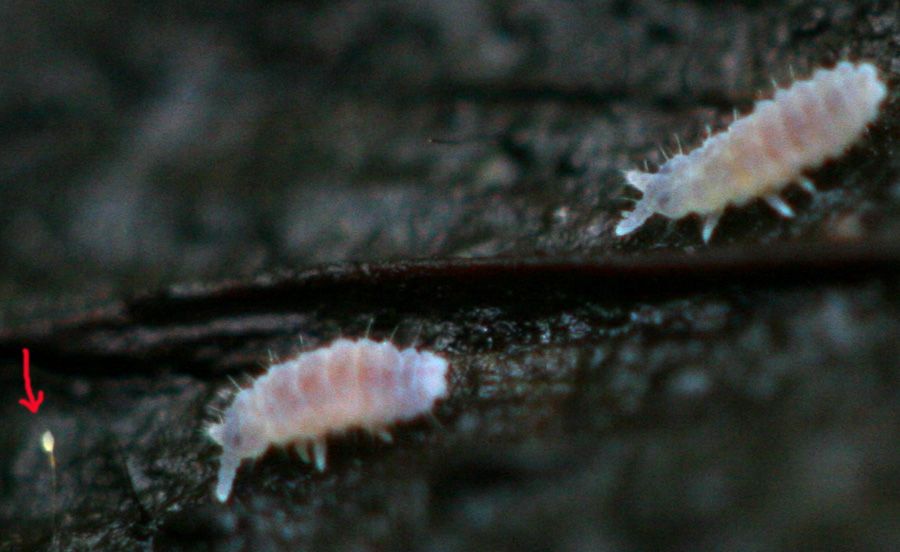Thread subject: Diptera.info :: Spermatophor?
Posted by Nikita Vikhrev on 13-09-2005 16:59
#1
Sorry to disturb with non-dipterology question, but during a month I didn't find any source of infirmation.
This Collembola is from Neanuridae (with semi-moon top of abdomen) live under tree bark.
Collembola males have to leave spermatophor in any siutable place, than female have to gather it.
What do you think the sabject (marked red line) is spermatophor or something else?

Posted by Andrius on 14-09-2005 07:54
#2
I think it could be some kind of fungus as well.
Posted by Nikita Vikhrev on 14-09-2005 17:27
#3
Yes, Andrius, as well it may be some fungi.
I show this image to freind of my friend, "collembolist" from Novosibirsk. She wrote me that honestly she has never seen collembola spermatophor herself. In this case, if not fungi than image may be rather rare and interesting. Size is siutable...
Posted by Xespok on 14-09-2005 17:41
#4
Honestly, if it was a fungus, I think there should be more of the same visible on the image. It is very rare, though not impossible to see a sigle mycelium with an apparent fruiting body. So my guess is that the object could well be a spermatophore.
"Mating
Collembola do not actually go in for conventional mating instead the males leave a spermatophore (a bag of sperm) where the females might find it, sometimes this is off the ground on a short stalk. This habit is feasible because many species tend to collect in groups, like small herds of miniature cattle, and thus the females are quite likely to find the spermatophores. A female will lay about 90 to 150 eggs during her life, though this also varies with species. The eggs take about a month to hatch at 8 degrees C but are quicker at warmer temperatures, Pogonognathellus plumbeus eggs hatch in 3-4 day at about 20 degrees C most will live for about a year. Some will live for a long time with out food, the longest I know of being 18 months for a single specimen on its own , though if the food runs out you will get cannibalism, particularly of eggs in some cultures and with some species."
Info from: http://www.earthlife.net/insects/collcare.html
Posted by Nikita Vikhrev on 14-09-2005 21:02
#5
Hi Xespok.
Reading your reply a simple idea came to my mind. Realy, living in last century without i-net I had to collect the doubtfull subject and simply inverstigate it under the microscop. So I'll try to do next weekend. Thank you.
Posted by Xespok on 15-09-2005 01:41
#6
Well the problem often is that you mostly only find these tiny small things on the photo and it is often too late to think about collecting something in the arm chair in front of the computer. I know that this group of Collembola is around 1mm in length, so the spermatophore is maybe 0.2 mm or so. This is too small to pick it up by the eye.
xespok
